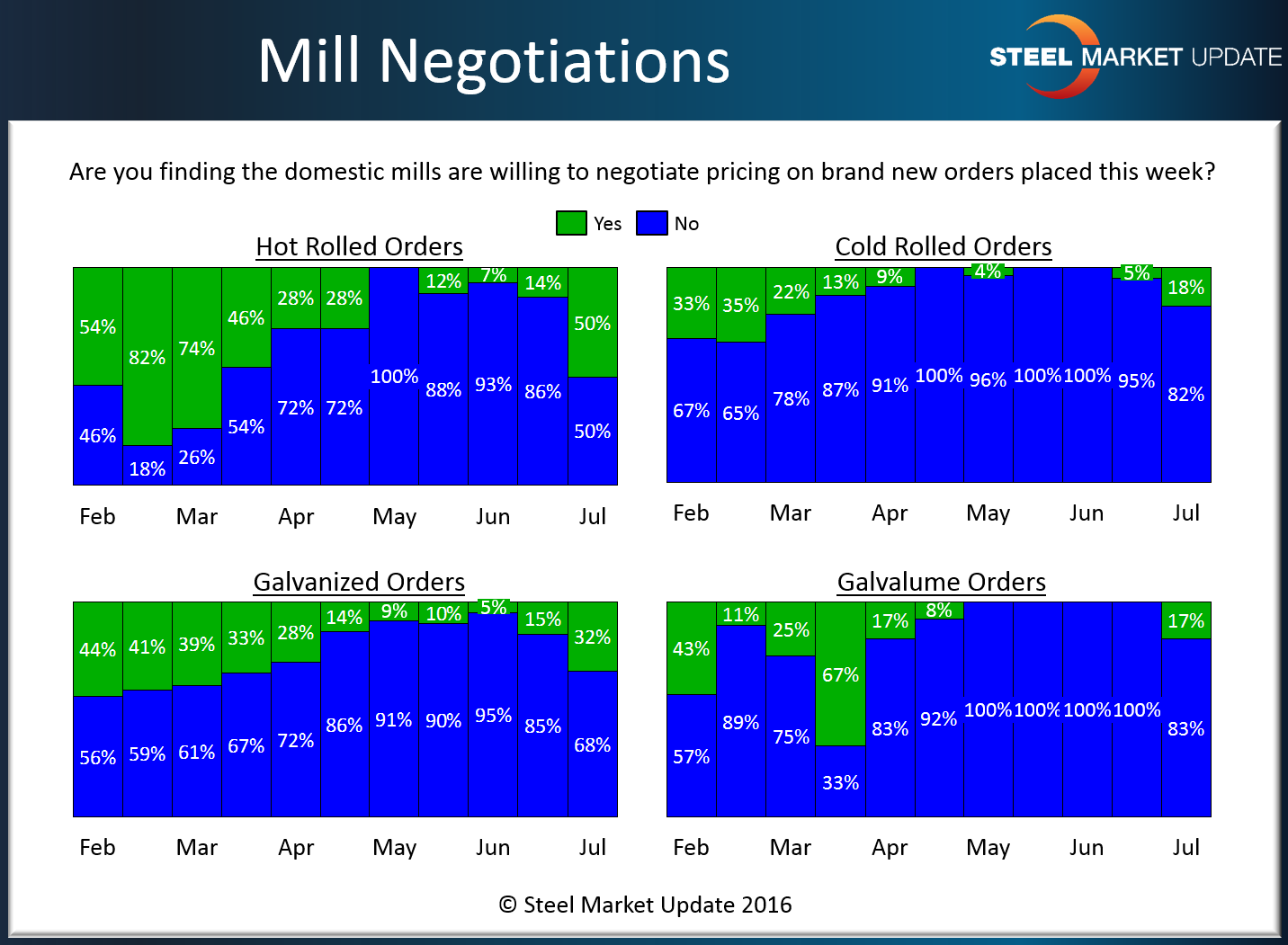SMU Data and Models

SMU Survey: Mill Negotiations
Written by John Packard
July 7, 2016
A second key subject addressed in our flat rolled steel survey regards negotiations between the domestic steel mills and their customers. We ask manufacturing companies and steel service centers to comment on whether their domestic mill suppliers are willing to negotiate spot steel pricing on hot rolled, cold rolled, galvanized and Galvalume steels.
The less willing mills are to negotiate the better able the mills are at keeping pricing firm. We are looking for trends or changes and we did see that in hot rolled this week where 50 percent of our respondents reported the mills as willing to negotiate HR prices this week. Two weeks ago, and for the past few months, there has been a relatively small percentage of respondents reporting HR prices as negotiable.
Cold rolled saw a very small increase (18 percent from 5 percent), galvanized a slightly larger increase (15 percent to 32 percent) as well as Galvalume (0 to 17 percent).
With this week being a holiday week (4th of July), the number of respondents was slightly lower than normal so we will watch the next survey to see if this is the beginning of a trend or just a blip in our numbers.
We remind our readers these results are based on responses to our survey. Each individual mill may have different approaches to negotiations and steel markets can be quite volatile and change quickly. It is important to stay close to your suppliers to make sure you are being kept up to date as to what they are doing and how your company fits into their plans.
A side note: The data for both lead times and negotiations comes from only service center and manufacturer respondents. We do not include commentary from the steel mills, trading companies, or toll processors in this particular group of questions.
To see an interactive history of our Steel Mill Negotiations data, visit our website here.

John Packard
Read more from John PackardLatest in SMU Data and Models

SMU’s June at a glance
A look at SMU data for the month of June.

SMU Survey: Buyers’ Sentiment rebounds from multi-year low
Both of SMU’s Steel Buyers’ Sentiment Indices edged higher this week. Current Sentiment rebounded from a near five-year low, while Future Sentiment rose to a two-month high

SMU flat-rolled market survey results now available
SMU’s latest steel buyers market survey results are now available on our website to all premium members.

SMU Survey: Sheet lead times pull back after early-June blip, plate holds
Following the uptick seen two weeks ago, lead times eased this week for all four sheet products tracked by SMU, while plate lead times held steady, according to this week’s market survey.

SMU Survey: Pricing power abruptly shifts to steel buyers
The majority of steel buyers responding to our latest market survey say domestic mills are more willing to talk price on sheet and plate products than they were earlier this month. Sheet negotiation rates rebounded across the board compared to early June, while our plate negotiation rate hit a full 100%.

